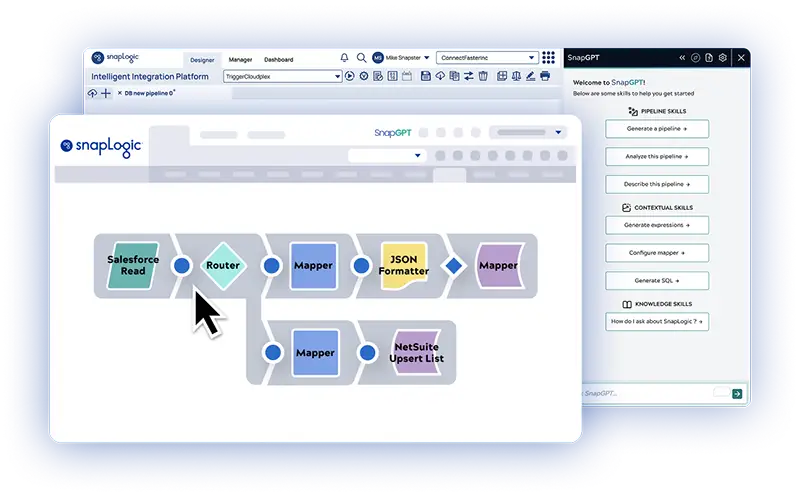Since its founding over a century ago, Stanford University has always led the way with new ideas, innovation, and growth. As it continues its leadership and prepares for an exciting future, the university is investing in modern technologies, systems, and processes to best serve its students, faculty, and alumni.
Stanford has long recognized it must continually modernize its technology infrastructure, move more applications and systems to the cloud, and get real-time data into the hands of more users across the university. A year ago, Stanford’s IT department started working with SnapLogic to connect its growing technology landscape, both in the cloud and on-premises, in order to streamline key processes and inform decision-making.
After a year of successful collaboration and results, Stanford has rolled out SnapLogic as the enterprise integration standard across the entire Stanford campus.
A modern foundation for a promising future
SnapLogic’s intuitive user interface, powerful and scalable platform, and ability to complete integrations in a fraction of the time and cost compared to previous efforts were all reasons Stanford chose to expand its use of SnapLogic campus-wide. The university was also looking to get off older legacy integration tools and onboard more modern, self-service tools to engage more users and achieve business outcomes faster.
Now, with SnapLogic’s self-service, AI-powered Intelligent Integration Platform, users of all technical skill levels across Stanford’s seven schools can easily connect applications, systems, and processes so they can act on data quickly and with confidence. In addition, beyond using SnapLogic’s core platform, Stanford is one of the first higher education institutions to use SnapLogic’s enhanced API management solution. In doing so, Stanford can now easily build, consume, and manage up-to-date APIs without the complexity of hand-coding and the costs of ongoing maintenance.
The result: a connected network of applications and systems, more productive users, better and faster decision-making, and accelerated time-to-value. With a modernized, connected infrastructure, Stanford is well prepared to serve its students, faculty, and alumni well into the future.
###
To learn more about SnapLogic for Higher Ed, check out the recent article in eSchool Media by SnapLogic’s Craig Stewart, or read the press releases on how Boston University and Vassar College are using SnapLogic to connect their applications and data quickly and easily.








